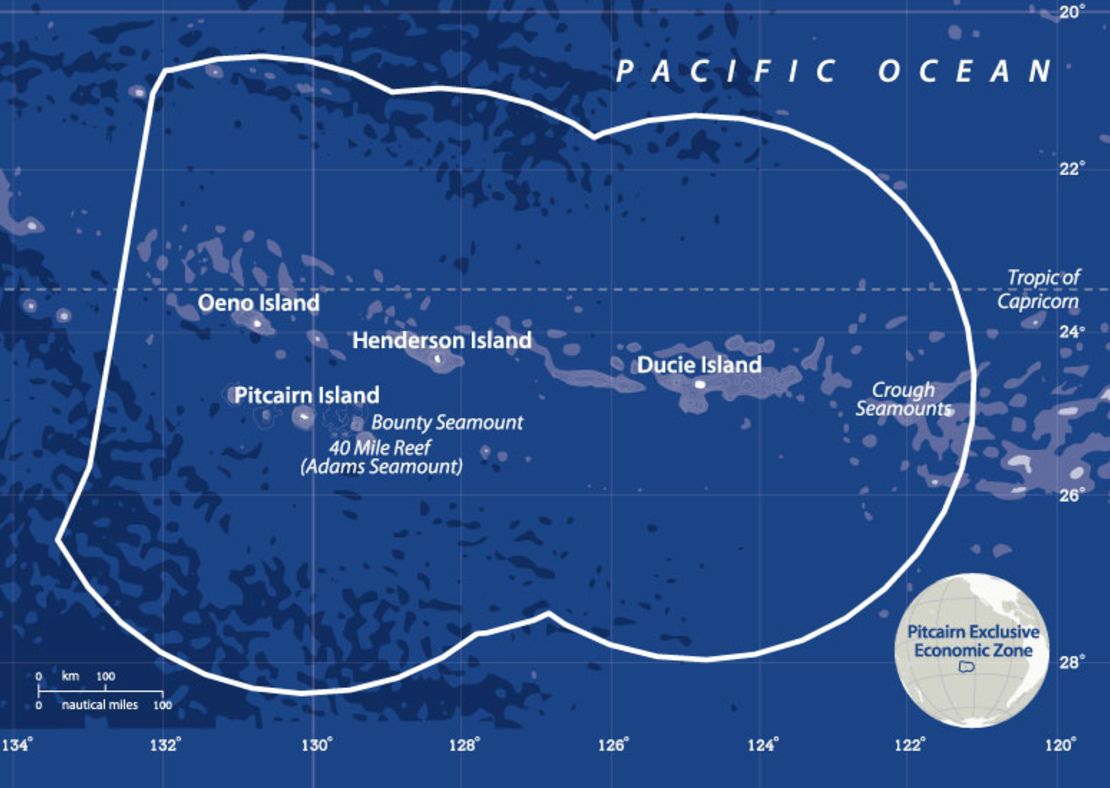Story highlights
Survey of Pitcairn Islands marine environment revealed a rich biodiversity of fish, coral and algae
Pew Environment Group hope to turn British Overseas Territory into a vast marine reserve
Around 1,250 marine species recorded but scientists believe many more remain undiscovered
"These places allow us to know what the ocean was like before heavy human impacts," expedition report says
The Pitcairn Islands might only have 55 human inhabitants, but the waters surrounding them are teeming with marine life.
A new study by the Pew Environment Group in partnership with the National Geographic Society has revealed the glorious extent of the biodiversity in this remote corner of the South Pacific.
A team of scientists led by marine ecologist Enric Sala completed more than 450 dives at 97 locations earlier this year as well as lowering cameras down to depths of 1,600 meters in a further 17 spots.
Along with more than 250 species of fish, 70 species of coral and more than 60 varieties of algae were observed around the four islands (Pitcairn, Henderson, Oeno and Ducie) that make up the British Overseas Territory.
To date, nearly 1,250 marine species (including seabirds) have been found in the area, but scientists believe many more remain undiscovered.
Read: Project to turn desert green trials in Qatar
Given its “unique and pristine” environment, the expedition report recommends turning the Exclusive Economic Zone (EEZ) – an area extending 200 nautical miles from a territory’s coast – around Pitcairn into a “no-take” marine reserve.
“There are only a handful of EEZs of the world that remain pristine occupying less than 5% of the ocean,” the report says.
“These places allow us to know what the ocean was like before heavy human impacts … and most important, to set proper conservation and management goals for our oceans.”
Should the UK government back the plan, the reserve would become the largest of its kind in the world, covering an area of more than 800,000 square kilometers (300,000 square miles), according to the Pew Environment Group.

The proposals have received the enthusiastic backing of the Pitcairn islanders, whose tiny population includes a direct descendant of Fletcher Christian – leader of the mutineers on HMS Bounty who settled on the island in 1790.
Read: What is the natural world worth?
A National Geographic documentary about the expedition – “Pitcairn: The Real Bounty Revealed” – recently premiered at the headquarters of the UK’s Royal Society in London.
Speaking at the event, Pew Environment Group managing director, Josh Reichert said that until recently it was widely believed that the oceans were too vast and abundant to be impacted by humans.
“We now know this is not true. Unless we change our relationship with the sea, we will inevitably bear witness to its collapse,” Reichert said.











